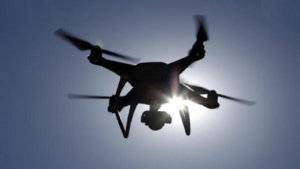The need for an anti-drone system shielding critical installations in the country came under sharp focus after Sunday’s drone attack on an IAF base in Jammu, 14 km from the international border. A security officer told The Daily Guardian, “At present, the only option is to shoot down the drones, but it is easier said than done as that would require sniper fire and the drone has to be within range. Also, sighting drones, especially during the night, is not easy.”
Rafael, the defence company behind Israel’s famed Iron Dome missile system, has also developed something called the Drone Dome. Like the Iron Dome, which identifies and intercepts incoming missiles, the Drone Dome detects and intercepts drones.
Besides the collection of static radars, radio frequency sensors, and cameras it uses to offer “a 360-degree coverage”, the Drone Dome is also capable of jamming the commands being sent to a hostile drone and blocking visuals, if any, that are being transmitted back to the drone operator. Its highlight, however, is the precision with which it can shoot high-powered laser beams to bring down targets.
One of the company’s promotional videos claims that it is safe for deployment in civilian areas as “the laser beam is never released unless it is 100 per cent locked onto the target”. Rafael, like most other companies, says its technology works under all-weather conditions and at night time.
US-based Fortem Technologies also operates similarly but uses an interceptor drone — aptly called the ‘Drone Hunter’ — to pursue and capture hostile drones. The Drone Hunter fires from its ‘NetGun’ a spider web-shaped net to capture targets midair and tow them.
Besides the regular detection and surveillance, Drone Shield, an Australian publicly listed company, also offers a portable solution in the form of a drone gun that can be used to point and ‘shoot’. The company’s Drone Gun Tactical and Drone Gun MKIII engage in radio frequency disruption that will disrupt the hostile drone’s video feed and force it to land on the spot or return to the operator.
To counter such drone attacks, we can equip our armies and guards with technologies including drone jammers and anti-drone guns. Those drone jammers can jam the signal of the drone from its controller, and once the signal breaks the drone will land on the ground and can be taken into the possession to gather the intel and information about the locations of operators, or it might be returned to its operator. Anti-Drone guns on the other hand have the capabilities to destroy the drone mid-air using a highly focused beam of laser. Hence these technologies can be used as a shield against these drone attacks. Currently DRDO as well as various defence-based Corporates are working on these technologies.
Recently, the world witnessed a significant increase in the number of used drones, with a global and continuous rise in the demand for their multi-purpose applications. The pervasive aspect of these drones is due to their ability to answer people’s needs. Drones are providing users with a bird’s eye that can be activated and used almost anywhere and at any time. However, recently, the malicious use of drones began to emerge among criminals and cyber-criminals alike. The probability and frequency of these attacks are both high and their impact can be very dangerous with devastating effects. Therefore, the need for detective, protective and preventive counter-measures is highly required.














